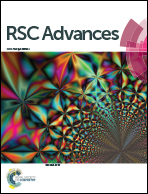QSPR with descriptors based on averages of vertex invariants. An artificial neural network study
Abstract
New type of indices, the mean molecular connectivity indices (MMCI), based on nine different concepts of mean are proposed to model, together with molecular connectivity indices (MCI), experimental parameters and random variables, eleven properties of organic solvents. Two model methodologies are used to test the different descriptors: the multilinear least-squares (MLS) methodology and the Artificial Neural Network (ANN) methodology. The top three quantitative structure–property relationships (QSPR) for each property are chosen with the MLS method. The indices of these three QSPRs were used to train the ANNs that selected the best training sets of indices to estimate the evaluation sets of compounds. The best ANN relationships for most properties are of the semiempirical types that include mean molecular connectivity indices (MMCI), molecular connectivity indices (MCI) and experimental parameters. Refractive index, RI, viscosity, η, and surface tension, γ, prefer a semiempirical relationship made of MCI and an experimental parameter only. In our previous study with no MMCI, random variables contributed to semiempirical relationships for two properties at the ANN level (MS, and El), here the use of MMCIs undo the contribution of such variables. Most of the MMCIs that contribute to improve the model of the properties are valence-delta-dependent (δv), that is, they encode both the hydrogen atom contribution and the core electrons of higher-row atoms.


 Please wait while we load your content...
Please wait while we load your content...